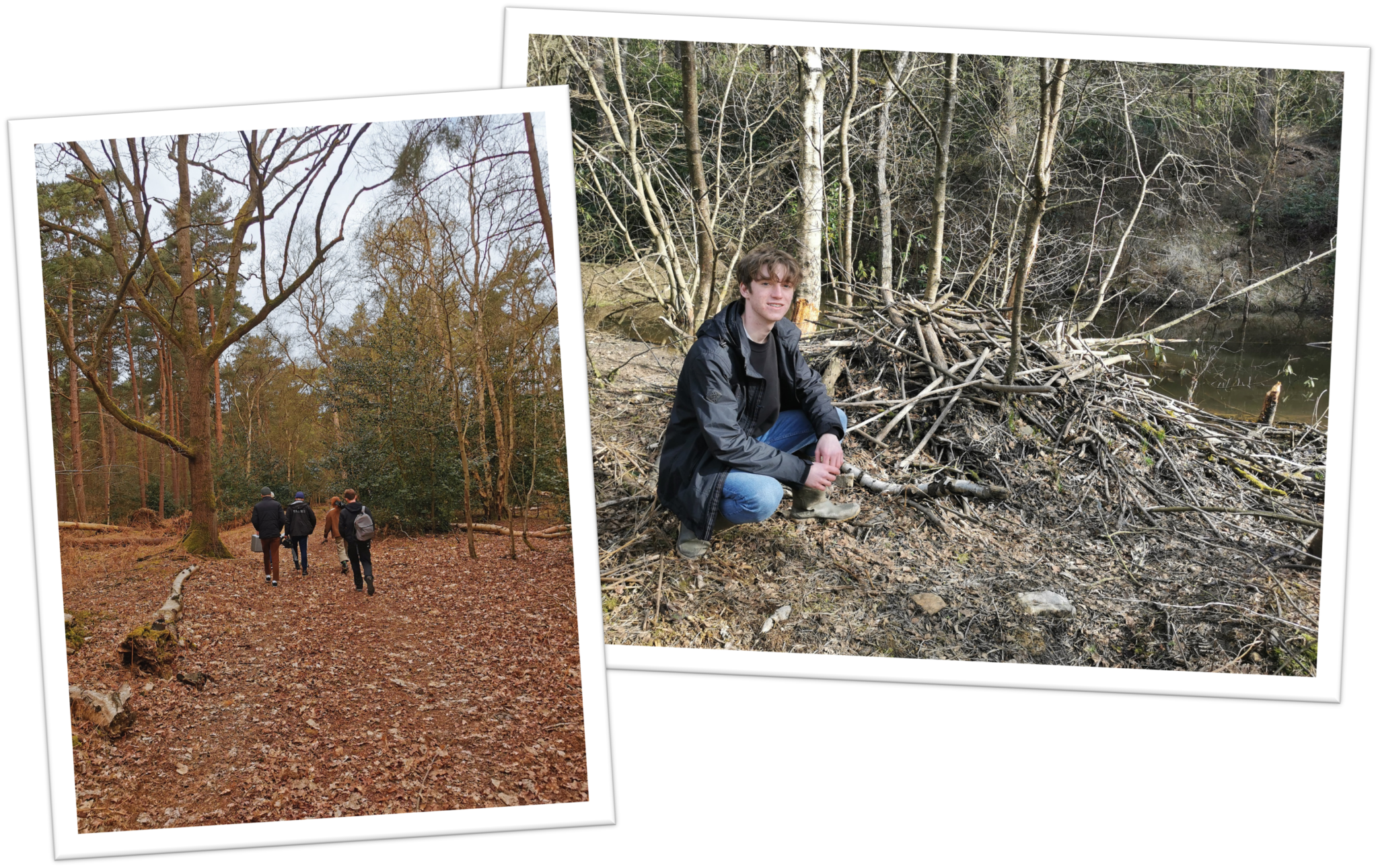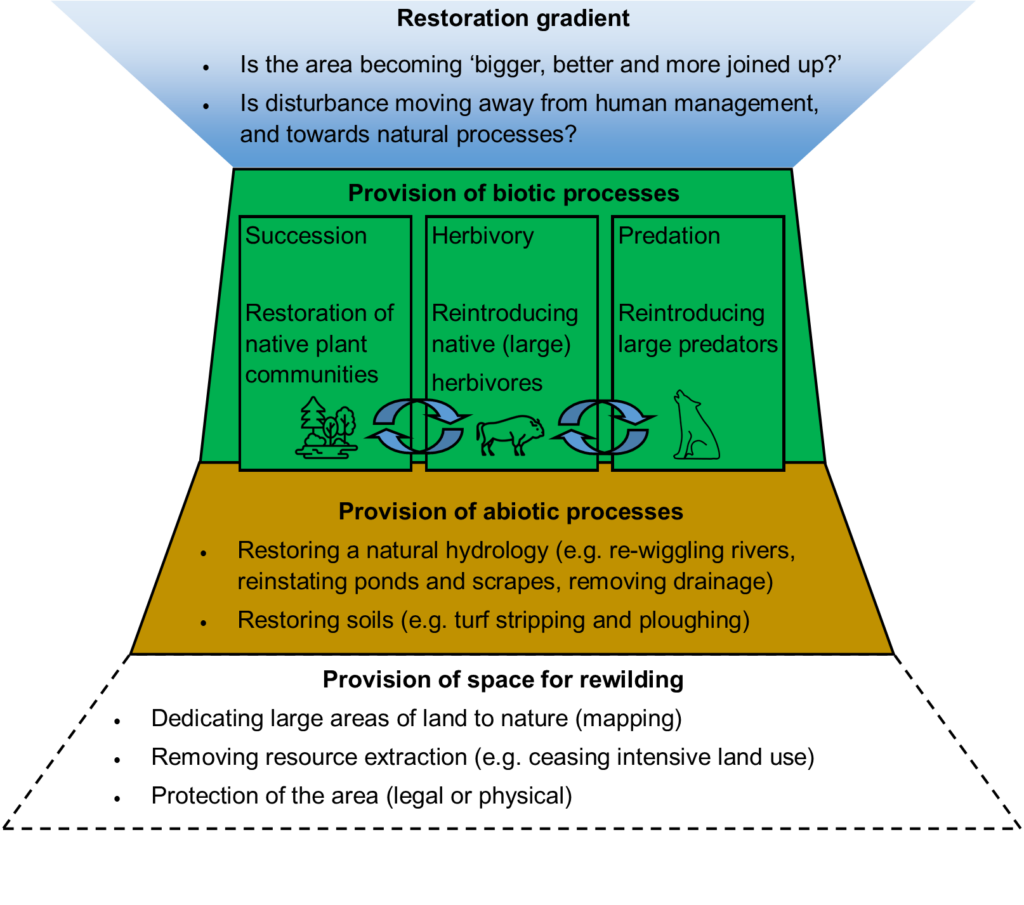Rewilding consultancy
We define rewilding as “the large scale restoration of ecosystems through the provision of protecting land from human uses, and re-introducing lost natural processes with the ultimate aim of letting nature take care of itself. This may include, but not limited to, the reintroduction of extinct species”.
It is estimated that a million acres of land maybe in a state of ecosystem recovery in the next ten years, while to date there is already 120,000 hectares of private land in a state of rewilding. Couple these facts with new economic incentives such as Enviromental Land Management schemes, carbon capital and biodiversity net gain, it is unlikley that the pace of rewilding is going to slow anytime soon.


The Rewilding Pyramid. © Celtic Reptile & Amphibian.
A straighforward way of grasping the process of rewilding is by looking at The Rewilding Pyramid, which has been developed by us. The pyramid is made up of the elements which fullfil a balanced process of restoration. These elements are (from the bottom):
- Space: ultimately, we need to allow space for nature, so that natural processes can physically happen. This is acheived by stopping major landuse (be it farming or forestry) and protecting the designated area.
- Abiotic processes: these are natural disturbances from non-living things, such as weather or water. Allowing abiotic processes takes the form of reinstating natural rivers and floodplains, removing human land drainage, and restoring soil.
- Biotic processes: these are disturbances caused by living things, such as a bison pushing over trees, or a pine marten hunting. Biotic processes are largley within 3 categories themselves, succession – the growth of vegetation, herbivory – animals which want to eat those plants, and predation – the act by which animals are hunted and eaten. Each of these factors interplay and generate disturbance, thus creating biodiversity.
- Restorative gradient: this is the way in which all of the processes mentioned determine in which direction the land is restoring.
Why choose us?
-
- On-site visits
- Access to extensive contacts in the field
- Practical species reintroduction assesments
- Fairly priced
Interested? Get in touch
Why choose us?
- On-site visits
- Access to extensive contacts in the field
- Practical species reintroduction assesments
- Fairly priced
